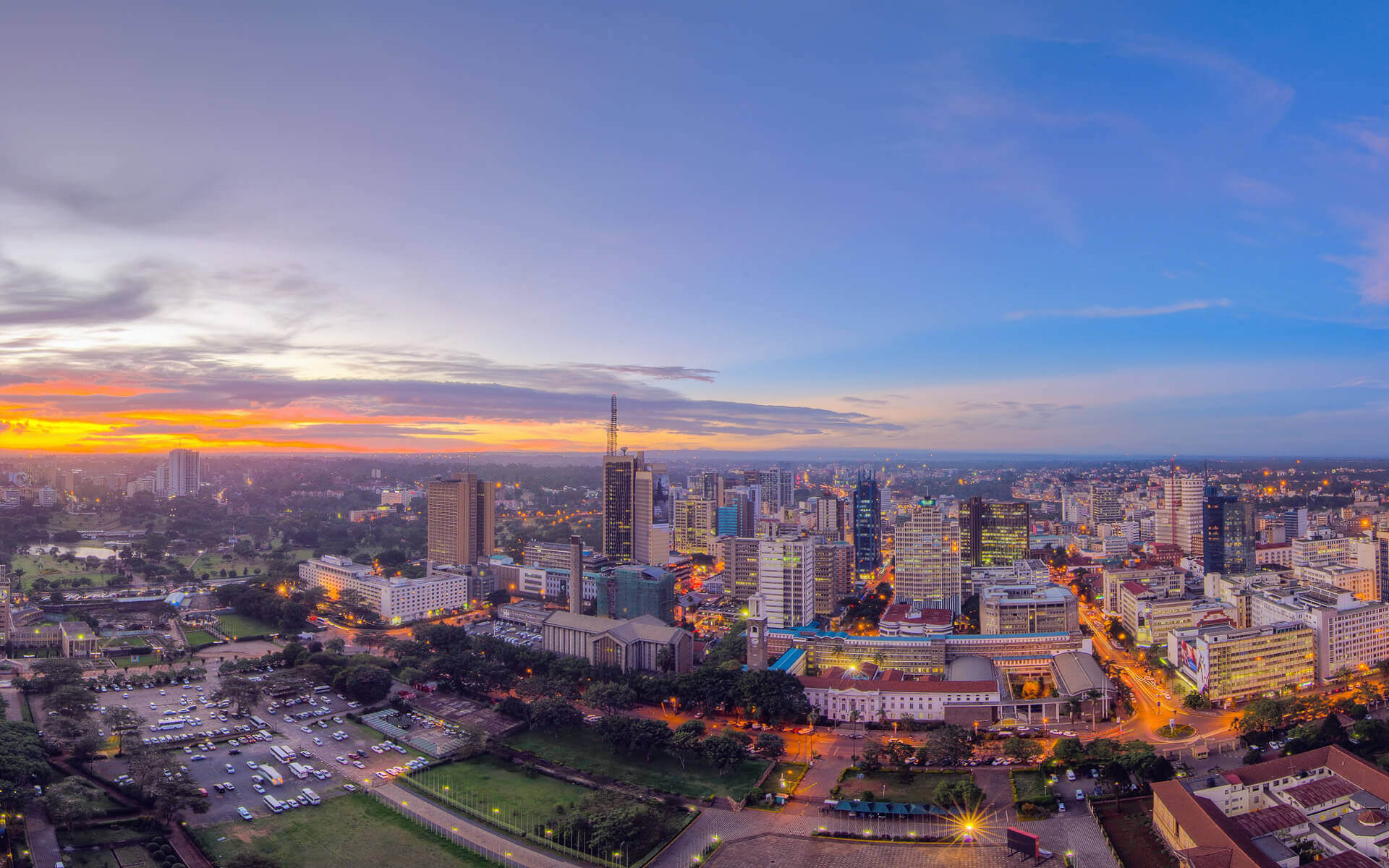Kenya’s Indian Ocean coastline enjoys a warm and humid tropical climate. The temperature is colder in the savannah grasslands surrounding Nairobi, especially closer to Mount Kenya, which has snow on its peaks all year. Further inland, in the Nyanza area, the climate is hot and dry, becoming humid near Lake Victoria, the world’s biggest tropical fresh-water lake. In the neighboring western region, this gives place to temperate and wooded hilly regions. The northern borderlands with Somalia and Ethiopia are dry and semi-arid, with near-desert terrain. Kenya is well-known for its safaris, diverse temperature and terrain, and vast animal reserves and national parks such as East and West Tsavo National Parks, the Maasai Mara, Lake Nakuru National Park, and Aberdares National Park. Kenya has multiple world heritage sites, including Lamu, as well as several beaches, including those in Diani, Bamburi, and Kilifi, where international sailing contests are conducted each year.
Humans have lived in the African Great Lakes area, of which Kenya is a part, since the Lower Paleolithic period. The Bantu expansion had reached the area from West-Central Africa by the first millennium AD. As a result, the current state’s borders include the crossroads of the continent’s Niger-Congo, Nilo-Saharan, and Afroasiatic regions, which constitute the majority of the continent’s main ethnolinguistic groups. The Bantu and Nilotic groups account for around 97 percent of the country’s population. The presence of Europeans and Arabs on the coast of Mombasa dates back to the early modern period, while European exploration of the interior began in the nineteenth century. The British Empire founded the East Africa Protectorate in 1895, which gave way to the Kenya Colony beginning in 1920. Kenya gained independence from Britain in December 1963. Kenya is currently divided into 47 semi-autonomous counties controlled by elected governors, after a referendum in August 2010 and the ratification of a new constitution.
Nairobi, the capital, is a regional business centre. Kenya’s economy is the largest in East and Central Africa in terms of GDP. Agriculture is a key job; traditionally, the island exports tea and coffee, but it has lately began to send fresh flowers to Europe. The service sector is also a significant economic engine. Kenya is also a member of the East African Community economic group.


